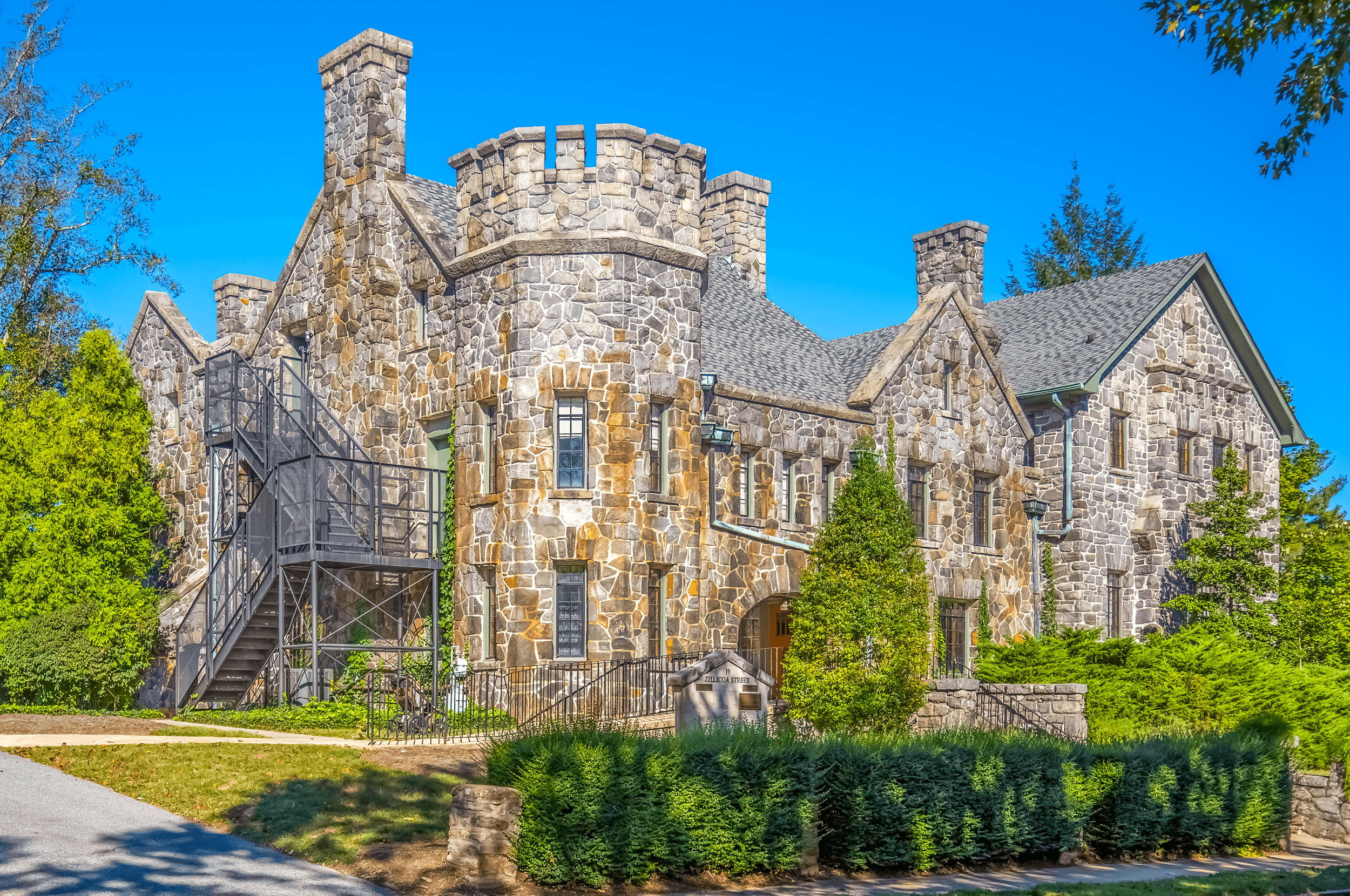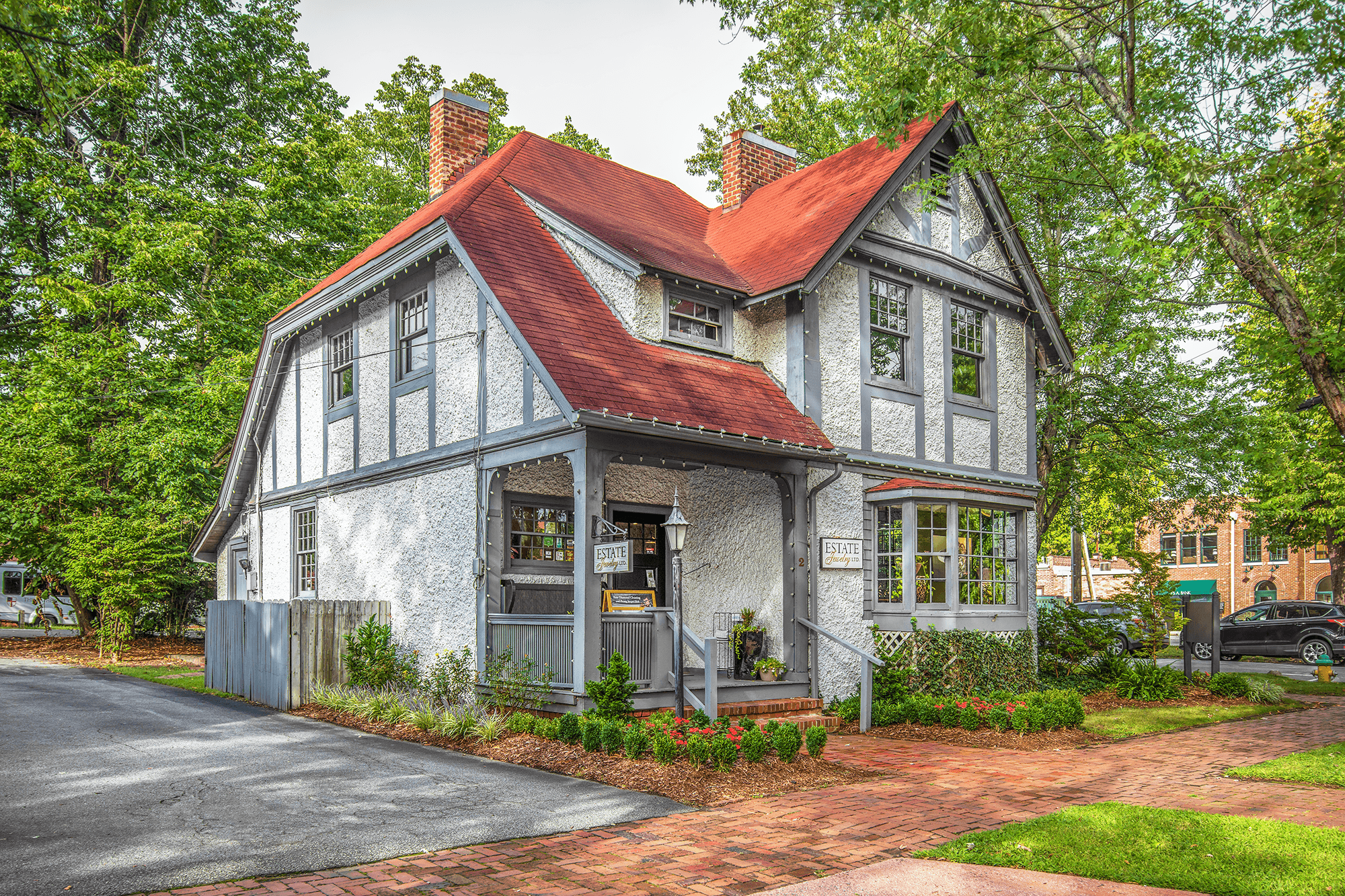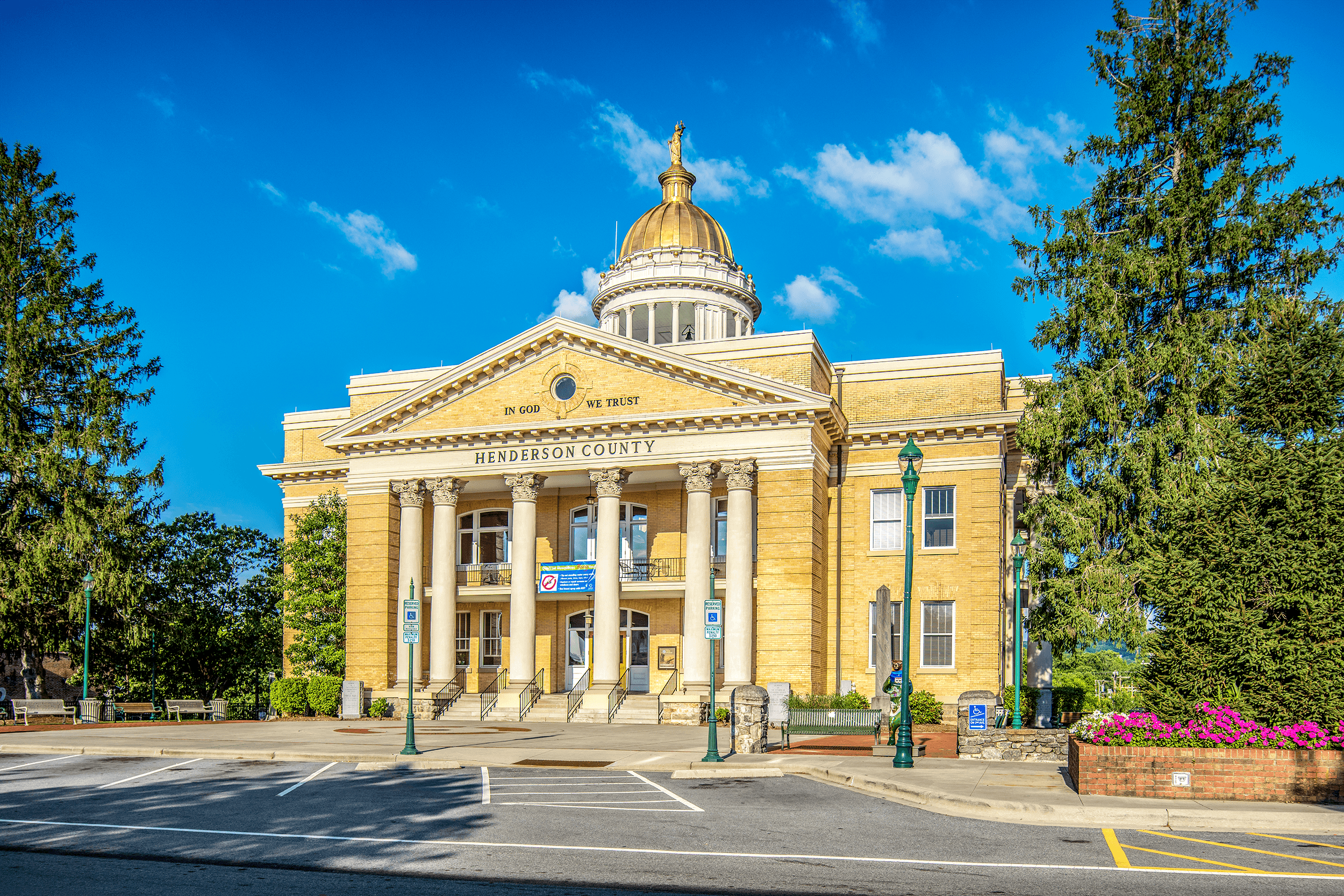Vance Memorial

Updated: April 2019
Vance Memorial
Standing 50 feet tall in the center of Pack Square Park, the Vance Memorial was erected in 1896 in honor of Zebulon Baird Vance (1830-1894), a Confederate military officer in the American Civil War, two times Governor of North Carolina and a member of the United States Senate.
Zebulon Vance’s Early Years
Zebulon Vance was born near present-day Weaverville (→ Vance Birthplace), just north of Asheville, as the third of eight children in 1830. At age 14, his father died which forced Zebulon Vance to discontinue college and return home. At age 21, he convinced the President of the University of North Carolina to loan him the money to attend law school. After earning his degree, Zebulon Vance started practicing law in Asheville and was elected county solicitor in 1853.
The American Civil War
In 1862, during the American Civil War, Zebulon Vance, as Colonel of the Confederate Army, engaged in battle in New Bern. In this battle Union forces captured New Bern and occupied it until the end of the war in 1865.
Governor of North Carolina
In the fall of 1862, at age 32, Zebulon Vance won the election and became Governor of North Carolina. Then in 1865, he was arrested by Federal forces only to be pardoned by President Andrew Johnson shortly afterward. Zebulon Vance relocated to Charlotte to start practicing law once again. In 1870, the North Carolina legislature elected him to the United States Senate, but as ex-Confederate, he was not allowed to serve.
Second Time Governor of North Carolina and U.S. Senator
In 1876, at age 46, Zebulon Vance was elected Governor of North Carolina for the second time. Three years later in 1879, the state legislature elected him to the United States Senate, where he remained a member until his death in 1894, at the age of 63. He is buried at the Riverside Cemetery in Asheville’s historic Montford District.
Religious Tolerance and Freedom Amongst All Americans
Zebulon Vance is also remembered for his 1870 speech “The Scattered Nation”, which he gave numerous times. In this speech he called for religious tolerance and freedom amongst all Americans.
Modeled After the Washington Monument
The 50-foot Vance Memorial in Pack Square Park was modeled after the Washington Monument. It was designed by architect Richard Sharpe Smith, who had worked for Richard Morris Hunt supervising the construction of → Biltmore House.
Some Present-Day Controversy over the Symbolism of the Memorial
Despite Zebulon Vance’s undoubtedly remarkable lifetime achievements and contributions as well as his reputable compassion for marginalized people, he is also remembered as an owner of slaves. That Zebulon Vance never publicly denounced this practice in his entire 40 years of public life, has created some controversy around the symbolism of this iconic and highly visible memorial in our present-day life.
About Richard Sharpe Smith (1852-1924)
In 1852 Richard Sharpe Smith was born in Yorkshire, England. He received his architectural training in the office of his cousin George Smith. He also worked for several architects in Manchester.
In 1882 Richard Smith immigrated to the United States and started his new position with the Reid Brothers, architects, in Evansville, Indiana.
In 1883 Richard Smith moved to New York City and joined Bradford L. Gilbert’s office, where he supervised the design and construction of railroad stations.
In 1886 Richard Smith joined the office of Richard Morris Hunt working on various projects for Richard Hunt.
In 1889 Hunt assigned Richard Smith to the Biltmore Project supervising the construction of → Biltmore House and other buildings on George Vanderbilt’s estate. Richard Smith was sent to Biltmore and communicated with Richard Hunt, who remained in his New York office, through weekly progress reports and frequent letters.
Starting in 1892 George Vanderbilt asked Richard Smith to design additional buildings for him.
In 1895, the same year, when → Biltmore House was finished, Richard Hunt suddenly died, and Richard Smith became George Vanderbilt’s personal architect.
In 1896 the Vance Memorial, which Richard Smith designed, was completed.
By 1901 the first cottages in the Cottage District in Biltmore Village were built.
In 1901 Richard Smith established his private practice in fast-growing Asheville. Through his abilities as an architect and indeed through his association with George Vanderbilt, Richard Smith became one of Asheville’s leading architects, and the first, who resided permanently in the city. During this time, Richard Smith designed the Henderson County Courthouse in Hendersonville (1905) and together with Rafael Guastavino the Basilica of Saint Lawrence (1905-1909).
In 1906 Richard Smith formed a partnership with Albert Heath Carrier, whose family had moved to Asheville in 1885, and formed the Smith and Carrier firm. Together the firm worked on more than 700 projects from its inception to Richard Smith’s death in 1924. Some of their essential works were the Legal Building (1909), the Scottish Rite Cathedral and Masonic Temple (1913), the Fraternal Order of Eagles Building (1914), the Elks Home (1915) and the Loughran Building (1923).
In 1924, Richard Smith died. He was praised by the local newspaper Asheville Citizen to have “done more than any other person to beautify the city.”
Richard Sharpe Smith is buried at the Riverside Cemetery in Asheville’s historic Montford District.
North Pack Square, Asheville, NC 28801
All day.
All year.
STREET VIEWING ONLY.
Pack Square Parking Garage.
Public bus stop: Patton Ave at Biltmore Ave.
Stop Gray Line Historic Trolley: Pack Square.









